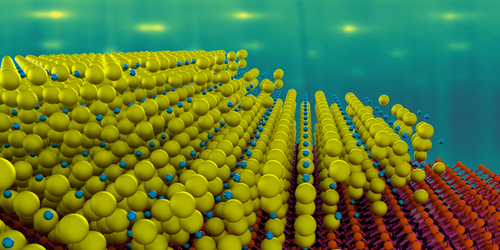Ultrathin Photocathode with High Efficiency
Scientists use optical microscopes to reveal otherwise invisible worlds, such as those inhabited by wriggling microorganisms and dividing cells. More detailed views of these systems are obtainable via devices such as ultrafast time-resolved electron microscopes, which use electrons rather than photons to image. In these microscopes, the electrons are generated using a photocathode, which emits electrons when illuminated with light. High-performing photocathodes have been around for nearly a century, but scientists have struggled to improve their efficiencies and performance, in part because of the extreme reactivity of the materials from which they are made. Now, a team of researchers from Cornell University has demonstrated a photocathode with an efficiency up to 10 times higher than other photocathode devices [1].
The team made their photocathode from an ultrathin film of the alkali antimonide Cs3Sb. Alkali antimonide materials have been used for decades in technologies including streak cameras and linear colliders. Researchers have also created photocathodes using alkali antimonides. But they found that surface disorder in films of the material can weaken the brightness of the resulting electron beam. The Cornell team shows that it can fix that performance problem by controlling the orientation of Cs3Sb’s atoms.
The team used molecular-beam epitaxy to deposit onto silicon carbide a 4-nm-thick single-crystal layer of Cs3Sb. Molecular-beam epitaxy “grows” the material one atomic layer at a time, allowing the team to lock the orientation of the atoms and create a single-crystal film. The team used in situ diagnostic tests, including x-ray and ultraviolet photoemission spectroscopy, to characterize the film’s performance. They calculate that the photocathodes have an estimated photoemission response time of just 10 fs—an order of magnitude faster than previous devices.
–Sarah Wells
Sarah Wells is an independent science journalist based outside of Washington, DC.
References
- C. T. Parzyck et al., “Single-crystal alkali antimonide photocathodes: High efficiency in the ultrathin limit,” Phys. Rev. Lett. 128, 114801 (2022).





